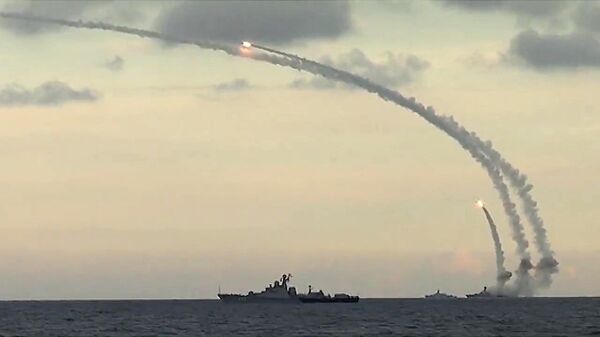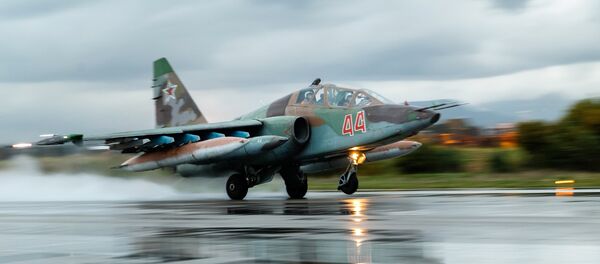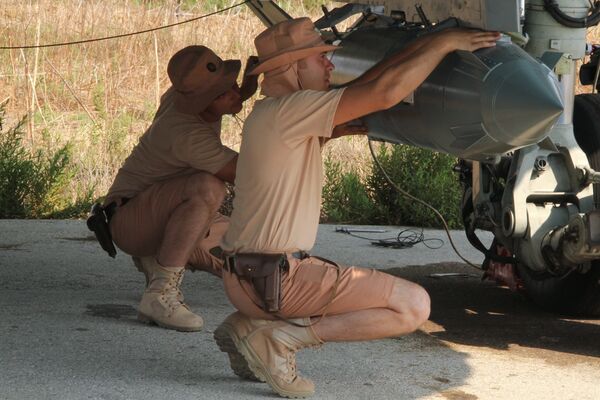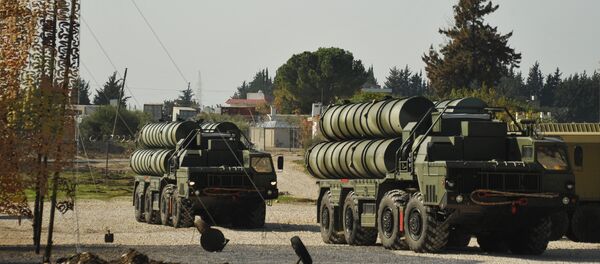Key Ingredient to Combat Success
In order to be successful, any military operation needs full-fledged combat support. In Syria, Russia demonstrated capabilities that wowed the world. As one of the world’s most powerful militaries, Moscow managed to deploy a task force to a remote battle zone covertly and rapidly. This was possible mostly thanks to the well-functioning logistics system, including by air and sea.
In strategic terms, this can be considered one of the most important aspects of the operation. It demonstrated the changes the Russian Armed Forces went through since the late-2000s, after a military reform was launched.

One of its goals was to create a mechanism for the fast deployment of forces to remote areas. The mechanism was repeatedly tested and improved during numerous "snap combat readiness checks" which started in 2013. The Syrian campaign became the pinnacle of this long training process.
Striking With the Highest Accuracy
The wide-spread belief that modern military uses nothing but advanced high-precision weapons for surgical strikes against the enemy is far from being true.
For conducting airstrikes against terrorists in Syria, the Russian aviation mainly relied on conventional bombs, including the OFAB-250-270 fragmentation air bomb. Guided munitions like the Kh-25ML and the Kh-29L and guided bombs played a less significant role.
Russia also used the KAB-500S GLONASS-guided bomb in Syria. It is a very high-precision weapon. It is dropped from an altitude of several kilometers and hits the target with an accuracy of three meters. The bomb was used to destroy terrorists’ ammo depots, command points and fortified areas.
However, this fact does not mean that Russia lags in developing and using high-precision munitions. The reason is the approach Russia has adopted in upgrading the capabilities of its air force.
Russia’s approach was to modernize the target-acquiring and navigating systems of tactical bombers. The SVP-24 Gefest target-acquiring system was developed as a result. It makes conventional air bombs more precise because it automatically calculates the flight parameters of the aircraft as well as external conditions. As a result, Russian "dumb" bombs can now hit the target with much higher accuracy.
Game-Changers
The operation marked the first combat use of some of Russian weapons, including the Kh-101 and Kh-555 missiles and the Kalibr ship-based cruise missile.
The Russian forces in Syria have also been backed from the sea, by a naval tactical unit led by the Moskva missile-carrying cruiser and the Caspian Flotilla. On October 7 and then on November 20, warships of the flotilla fired Kalibr missiles from the Caspian Sea and successfully hit the targets from a distance of 2,500 km.
On December 8, Russia conducted its first submerged combat launch of a Kalibr long-range cruise missile. Missiles were launched by the Rostov-on-Don Diesel-electric submarine, successfully hitting all designated targets.
The combat use of those weapons did not change the course of the military campaign. However, they can be considered game-changers in terms of military practice and reputational benefits.
Recognition of the Fullback
The Russian campaign in Syria also marked the first full-fledged combat use of the Su-34 (NATO reporting name Fullback) jet fighters.
The Su-34 is Russia’s most advanced interdiction aircraft. It was designed as a replacement for Russia’s fleet of ageing Su-24 Fencer strike aircraft.
The Fullback is provisioned with a formidable air-to-air self-defense capability. It is armed with R-73 dogfighting missiles and R-77 long-range radar-guided air-to-air missiles. The Su-34 has a combat radius of nearly 700 miles on internal fuel but is also designed for aerial refueling.
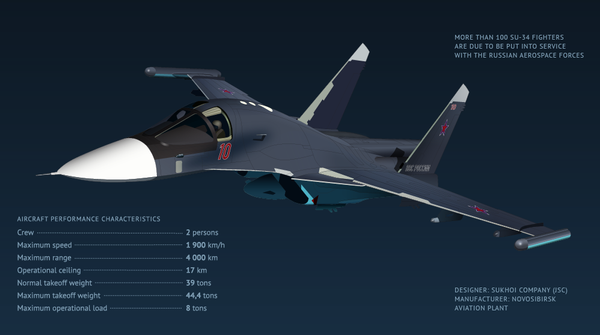
Among those awarded for their participation in the operation there are several officers flying on Su-34 jets. According to the Sukhoi Design Bureau, two of its engineers working with the aircraft were also awarded.
This proves the fact that Russian political and military officials were impressed with the capabilities of the jet.
Early Results
Of course, now it is preliminary to make decisive conclusions from the Russian campaign in Syria which ended on March 14. The Russian Defense Ministry will gather and analyze information on the tactics and weapons involved in the campaign.
First, Russia has proved its capability to carry out a military operation of small scope, in a remote battle zone, using advanced aircraft and maintaining logistic support.
Second, the operation became an outstanding promotional campaign of Russian-made military hardware for potential buyers. For example, Algeria ordered a shipment of Su-32 jets (the export version of the Su-34) in the wake of the successes of the Russian aviation in Syria.
Third, and maybe the most important, the Russian involvement in Syria has gained significant political advantages. In the long-term, it could become a turning point in contemporary international relations.

